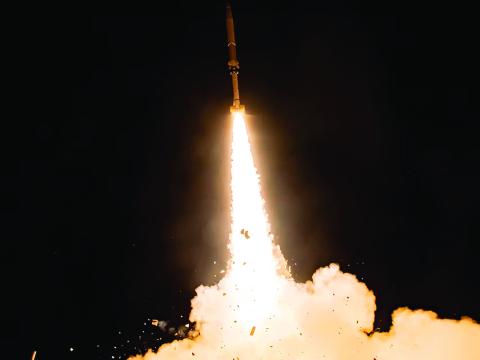One Giant Leap for Spotting Space Debris
No matter how vast it seems, even space gets a little crowded. Hundreds of active satellites and thousands of pieces of space junk clutter the area surrounding Earth-from lost astronaut tools to pieces of rockets. To help track and identify the debris, the U.S. Air Force is replacing its aging and outdated Air Force Space Surveillance System, which has been in service for 50 years.
No matter how vast it seems, even space gets a little crowded. Hundreds of active satellites and thousands of pieces of space junk clutter the area surrounding Earth-from lost astronaut tools to pieces of rockets. With the potential to travel at 17,500 miles per hour, even the smallest objects pose a big risk to spacecraft. To help track and identify the debris, the U.S. Air Force is replacing its aging and outdated Air Force Space Surveillance System, which has been in service for 50 years.
In this month's SIGNAL Magazine, Technology Editor George I. Seffers investigates the state-of-the-art space situational awareness sensor in his article, "Not Your Granddad's Space Fence."
The new technology, Space Fence, is an S-band radar-based system that aims to be a more accurate sensor for objects in low-Earth orbit, says Linda Haines, Space Fence program manager. She asserts that the new capabilities of modern S-band radars are a significant improvement over the previous system, which was fielded in 1961:
"The primary mission of Space Fence is to identify things in low-Earth orbit that are potentially a danger to our space assets. It's one of the largest S-band phase arrays ever built in the world, and that obviously comes with some potential technical challenges, although it is on track to reach all maturity levels required in this phase of the program."While the legacy system focuses on one area of space at a time, the high-tech replacement will allow operators at the Joint Space Operations Center (JSpOC) to aim multiple radars at different angles as needed. In addition, Space Fence will be able to detect objects as small as a golf ball from nearly 1,000 kilometers-an improvement over the current system, which spots objects the size of a washing machine. During the development stage, Haines reports that the Air Force decreased potential life-cycle costs by 65 percent thanks to the use of commercial technologies developed for cell phones, such as low-cost amplifiers:
"We're talking about costs in dollars versus costs in thousands of dollars just because of the volume that we're going to be purchasing"Raytheon Integrated Defense Systems and the Lockheed Martin Mission Systems and Sensors division will develop preliminary designs for the $3.5 billion Space Fence program during an 18-month period. Pending approval of the system architecture, the final contract will be awarded in summer 2012. The system is expected to be operational by 2015.




Comment
Dear Team and readers, as a
Comments